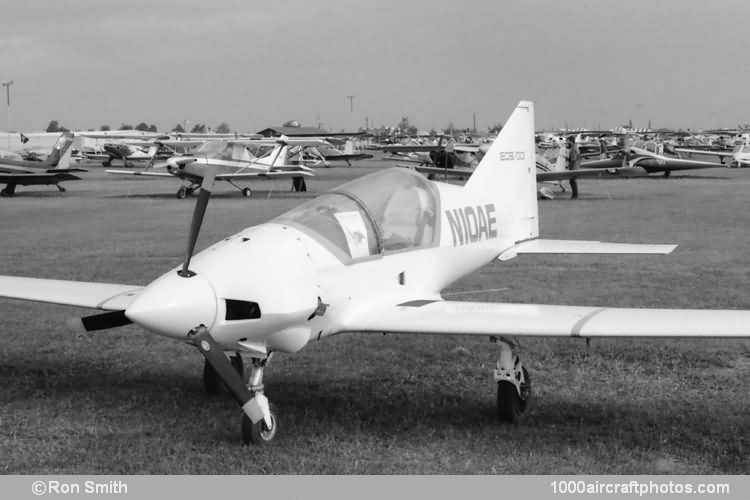In early 1978 the project was revived, with a modified Volkswagen motor car engine in place of the original engine. First flight of the reworked aircraft was in mid-1978, piloted by Robert Bishop. By August 1978 the EOS had completed about ten flying hours, and further modifications to the aircraft had been made. Airmotive Engineers is also referred to the design of the EOS, however, they did the marketing. Eventually the release of plans and/or kits was never realized, and the prototype remains the only example ever built."
Type: Single-seat light sporting aircraft.
Wings: Cantilever tapered low-wing monoplane. Wing section NACA 651212. Light alloy all-metal structure, except for glass fiber wing fillets, pop-riveted and epoxy resin bonded.
Fuselage: Conventional light alloy semi-monocoque structure, pop-riveted and epoxy resin bonded. Glass fiber engine cowling.
Tail unit: Cantilever light alloy structure, comprising triangular fin, integral with rear fuselage, rudder, and all-moving tail plane with projecting balance arms at roots. Tail plane actuated via servo tabs.
Landing gear: Manually-retractable tricycle type. Main units retract inwards. Fully castoring and steerable nose wheel. Rubber-in-compression shock-absorption. Disc brakes.
Power plant: One 70 hp 1,834 cc Volkswagen modified motor car engine, driving through a 7 in (178 mm) extension shaft a 4 ft 2 in (1.27 m) diameter Rand Robinson three-blade ground-adjustable propeller, with Mooney 201 spinner. Fuel capacity 15 gal (56.75 l).
Accommodation: Single glass fiber seat under large transparent canopy.
Systems: Electrical system includes 45A alternator and starter.
